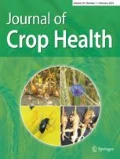Zusammenfassung
Automatische Systeme zur Regelung der Gestängehöhe sind bei Feldspritzgeräten inzwischen Stand der Technik. Diese Systeme sollen eine vorgewählte Höhe des Spritzgestänges über der Zielfläche (Bestand oder Boden) sicher einhalten; eine wichtige Voraussetzung für die genaue Verteilung von Pflanzenschutzmitteln und die Begrenzung des Abdriftrisikos. Vom Institut für Anwendungstechnik im Pflanzenschutz wurde in Zusammenarbeit mit der Firma CheckTec ein neuartiges Prüfverfahren entwickelt. Mit diesem kann die Genauigkeit solcher Systeme im Rahmen einer amtlichen Geräteprüfung zuverlässig beurteilt werden. Das Verfahren basiert auf einem modularen, stationären Prüfstand. Die Module bestehen aus künstlichen Zielflächen, die jeweils unter den Abstandssensoren des zu prüfenden Gestänges angeordnet werden und durch elektrische Linearantriebe vertikal bewegt werden können. Diese Bewegungen sind frei programmierbar und erzeugen ein Zielflächenprofil, dem das Gestänge folgen soll. Bei ersten Versuchen wurden verschiedene Regelsysteme mit einem synthetischen Zielflächenprofil und zwei realen Feldprofilen in unterschiedlichen Regelungsmodi (Höhe und Neigung) untersucht. Dabei sollte festgestellt werden, ob die Prüfmethode reproduzierbare Ergebnisse liefert und welche statistischen Parameter am besten für die Beschreibung der Testergebnisse geeignet sind. Darüber hinaus sollte untersucht werden, welchen Einfluss das Testprofil auf den Vergleich der Regelsysteme hat. Es konnte nachgewiesen werden, dass die Testergebnisse sehr gut reproduzierbar sind, sodass drei Wiederholungen ausreichend sind, um eine gesicherte Bewertung der Regelsysteme zu erreichen. Das für die Tests verwendete Zielflächenprofil kann sich auf den relativen Vergleich der Regelsysteme auswirken. Dies wäre jedoch bei Feldversuchen ebenso der Fall.
Abstract
Automatic boom height control systems for sprayers have become more common in recent years. These systems shall maintain a set boom height above the target area (canopy or ground) as an important factor for an accurate distribution of the spray liquid and sufficient drift control. At the Institute for Application Techniques in Plant Protection in cooperation with CheckTec a novel procedure was developed for assessing the control accuracy of such systems within an official sprayer test protocol. The method is based on a stationary test bench consisting of target area units placed below the height sensors of the sprayer. The target area can perform arbitrary movements simulating a ground or canopy surface profile. At first tests different boom height control systems were studied using a synthetic and two different field profiles in two control modes (height and tilt control) to prove whether the protocol would give reproducible results and to identify statistical parameters appropriate to describe the test results. In addition, the influence of different test profiles on the results should be determined.
It could be shown that the test were reproducible. Three test replications were found sufficient for a reliable evaluation of the control systems. The test profile used can influence the ranking of the control systems but this would be found in field tests, too.






Literatur
DLG (2014) 60 Gespanne stehen am Start. DLG-Mitteilungen 130(6):14–15 (Innovations-Magazin)
Griffith J, Strelioff B, Schnaider J (2012) The Hockley index. In: American Society of Agricultural and Biological Engineers Annual International Meeting 2012, ASABE 2012, Bd. 2, S 1325–1332
Jeon HY, Womac AR, Gunn J (2004) Sprayer boom dynamic effects on application uniformity. Trans Asae 47(3):647–658
Miller PCH, Lane AG, O’Sullivan CM, Tuck CR, Ellis MCB (2008) Factors influencing the risk of spray drift from nozzles operating on a boom sprayer. Aspects Appl Biol 84:9–16
Nuyttens D, De Schampheleire M, Baetens K, Sonck B (2007) The influence of operator-controlled variables on spray drift from field crop sprayers. Trans Asabe 50(4):1129–1140
Wolf P (2002) Verteilungsqualität von Feldspritzgeräten. Techn. Univ., Braunschweig (Diss.)
Förderung
Die Förderung des Vorhabens erfolgte aus Mitteln des Bundesministeriums für Ernährung und Landwirtschaft (BMEL) aufgrund eines Beschlusses des deutschen Bundestages. Die Projektträgerschaft erfolgte über die Bundesanstalt für Landwirtschaft und Ernährung (BLE) im Rahmen des Programms zur Innovationsförderung.
Author information
Authors and Affiliations
Corresponding author
Ethics declarations
Interessenkonflikt
A. Herbst und H.-J. Osteroth geben an, dass kein Interessenkonflikt besteht.
Rights and permissions
About this article
Cite this article
Herbst, A., Osteroth, HJ. Ein neuartiges Verfahren zur Prüfung von automatischen Systemen zur Regelung der Gestängehöhe bei Feldspritzgeräten. Gesunde Pflanzen 71 (Suppl 1), 17–24 (2019). https://doi.org/10.1007/s10343-019-00445-x
Received:
Accepted:
Published:
Issue Date:
DOI: https://doi.org/10.1007/s10343-019-00445-x

